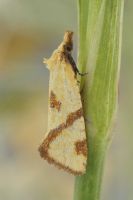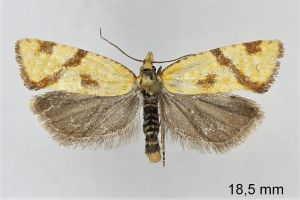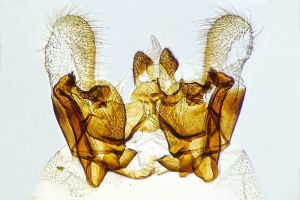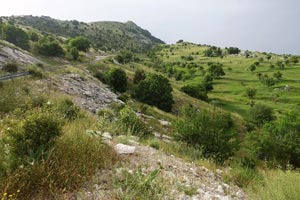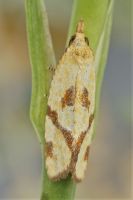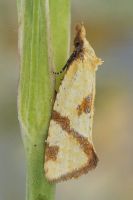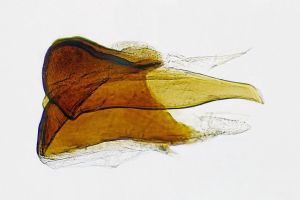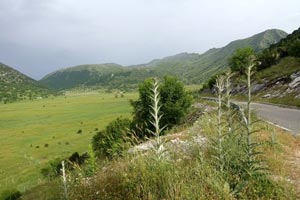1. Lebendfotos
1.1. Falter
1.1.1. Männchen
2. Diagnose
2.1. Männchen
2.2. Genitalien
2.2.1. Männchen
3. Biologie
3.1. Habitat
3.2. Nahrung der Raupe
Noch unbekannt!
4. Weitere Informationen
4.1. Etymologie (Namenserklärung)
Bassi (2014) erläutert: "The species is named in honour of the late Dr. Ing. Gianfranco Salotti, who died suddenly in 2012, in memory of his eco-environmental teaching."
4.2. Typenmaterial
Die Art ist nur vom Holotypus und drei Paratypen bekannt, alle vom gleichen Fundort und gleichen Datum. Bassi (2014) erläutert:
"Holotype ♂, “[Greece, Peloponnesus, Corinthia, Mt. Kyllini, 37o 56’ N, 22o 23’ E] Grecia, Peloponneso, Corinzia, Mt. Killini, 1750 m, 30-VI-2003, lux, leg. G. Bassi”; “Holotypus Ceratoxanthis giansalottii G. Bassi 2012”; “Coll. G. Bassi no 31753”; CB.
Paratypes: 2 ♂♂, 1 ♀, same labels as the holotype, GS 4923, 5533 and 5550 GB, CB and ISEZ."
4.3. Publikationsdatum der Erstbeschreibung
Als Publikationsdatum wird der 30. September 2014 genannt.
4.4. Faunistik
Die Art war zunächst nur vom Typenfundort in Griechenland, Peloponnes, Corinthia, Mt. Kyllini bekannt. Trematerra & Colacci (2017) melden weitere Exemplare: "1 ♂, Portaria, 1000 m, 19-V-2016; 2 ♂♂, Chania, 1350 m, 10-VI-2016; 2 ♂♂, Chania, 1350 m, 20-VI-2016; 1 ♂, Chania, 1350 m, 28-VI-2016." Die neueren Funde betreffen die Pelion-Berge im Regionalbezirk Magnisia in der Region Thessalien, also im östlichen Festland-Griechenland.
(Autor: Erwin Rennwald)
4.5. Literatur
- Erstbeschreibung: Bassi, G. (2014): A new species of Ceratoxanthis Razowski, 1960 from Greece (Lepidoptera: Tortricidae, Tortricinae, Cochylini). — SHILAP Revista de Lepidopterología, 42 (167): 489-492. [PDF auf redalyc.org [im Oktober 2023 (vorübergehend ?) nicht (mehr) zugänglich]]
- Trematerra, P. & M. Colacci (2017): Contribution to the faunal study of the Tortricidae of Pelion Mountains (Greece) with description of Cydia magnesiae Trematerra & Colacci, sp. n. (Lepidoptera: Tortricidae). — SHILAP Revista de Lepidopterología 45 (179): 467-480. [zur Arbeit auf redalyc.org [im Oktober 2023 (vorübergehend ?) nicht (mehr) zugänglich]], [jetzt alternativer Link zu PDF auf auf us.archive.org]




![Vorkommen in Albanien [https://forum.lepiforum.org/obs/257568]](/res/img/flag/al.gif)
![Vorkommen in Griechenland (Festland und festlandsnahe Inseln) [Trematerra & Colacci (2017)]](/res/img/flag/gr.png)
